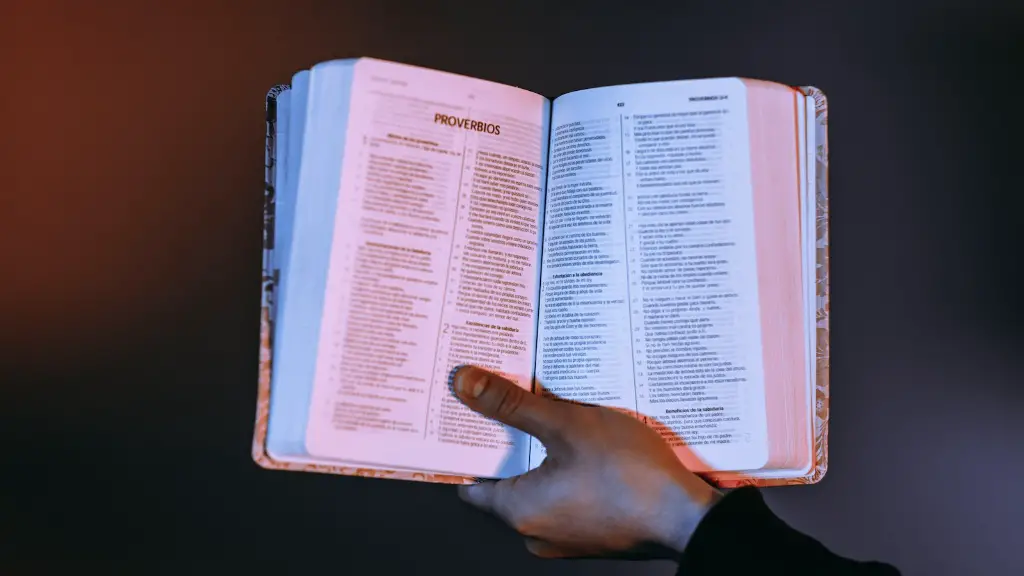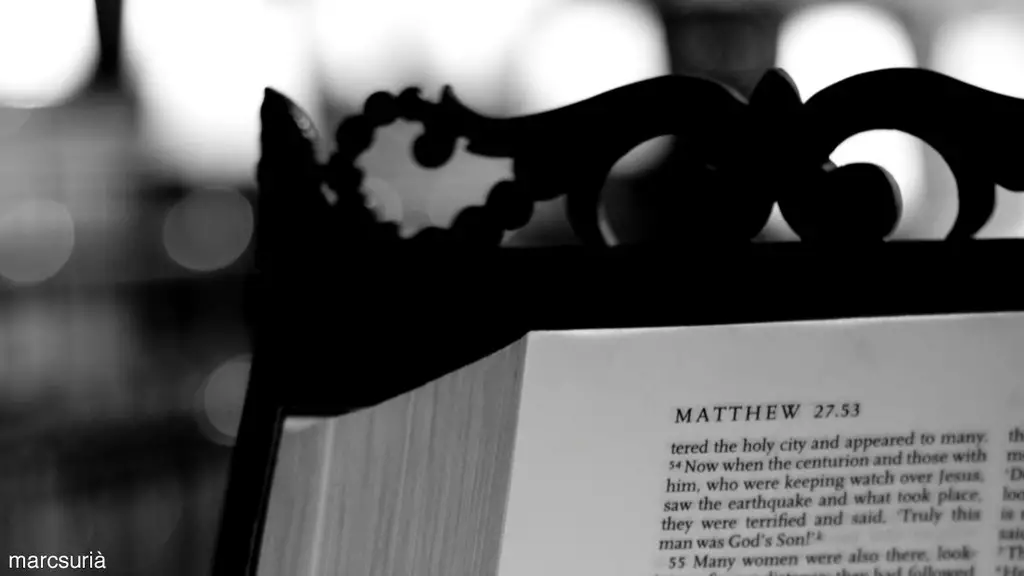Biblical narratives depict a wide range of women and their involvement in biblical stories. Biblical authors recognize the influence of women in Israelite culture. As such, many female characters in the Bible are given significant recognition. However, the question remains: how many women are mentioned in the Bible? To answer this question, let us take a closer look at the scriptures. All in all, the Bible mentions around 300 women.
The Bible can be divided into Old and New Testaments, with the Old Testament comprised of the 39 books of the Hebrew Bible and the New Testament of the 27 books of the Christian Bible. Out of the 39 books of the Old Testament, 22 books include some mention of women. In these books, 128 women are named and discussed in varying detail. The narrative of these books often focuses on men, but women are still included in the story and even take lead roles at times. For example, in the Book of Samuel, Hannah is praised for her courage and faithfulness to God and her family.
In the 27 books of the New Testament, 155 women are mentioned—a nearly 50% jump from the Old Testament. The New Testament focuses more on women, about 25% of the stories in the New Testament include female characters. Notably, women play a more prominent role in the stories of the New Testament than in those of the Old Testament—Mary, Jesus’ mother, is perhaps the most notably referenced woman in the Bible, and is described as the “first disciple” of Jesus. Additionally, the New Testament also includes stories of women who were influential in spreading and promoting the gospel, such as Mary Magdalene and Lydia of Thyatira. The New Testament stories of many women highlight the importance of woman’s faith, courage and commitment to spreading the gospel.
In total, we can draw the conclusion that the Bible mentions around 300 women. It is worth noting, however, that this figure does not include any potential female characters who are referenced or mentioned but not given a name. The Bible’s inclusion of women highlights a respect for their role in society, and paints a picture in which women have equally as much influence and importance as men, both from a spiritual perspective and within society.
The Role Of Women in Ancient Israelite Society
Ancient Israelite society was largely patriarchal, with men playing a central role in the social, economic, and religious spheres. However, women still had a certain level of status and power in Ancient Israelite society. Women had certain rights and privileges, such as the right to own property, the right to divorce their husband, and the right to inherit land. Additionally, Ancient Israelite society gave women religious leadership roles—women played a prominent role in cultic activities and were worshippers of God. This shows that Biblical authors had a respect and appreciation for the role of women in Israelite civilization.
In addition to cultic activity, women held various other roles and occupations. Women served as midwives, and played an important role in the community in caring for the sick and elderly. Some women also held positions of favor in the royal court, such as Abigail, who acted as a wise advisor and saved the life of her husband David. These examples demonstrate that contrary to a strictly patriarchal society, women occupied a significant place in the Ancient Israelite culture, and biblical authors gave recognition to the importance of their roles.
Moreover, many women in the Bible were influential in demonstrating or promoting righteous living or faithfulness to God. Esther, for example, is a prominent figure in the Old Testament—she made a courageous decision that saved her people from a genocide. In the New Testament, many women were devoted followers of Jesus, such as Martha, Mary and the other women at the foot of the cross. These women played a central role in spreading the gospel of Jesus even before his resurrection.
Women in Leadership Positions in Ancient Israelite Society
Apart from their various important roles and occupations, women in Ancient Israelite society also had some access to leadership positions as well. For example, Deborah was a prophetess who served as a judge and leader of Israel during the period of the judges in the Book of Judges. Huldah was another prominent female figure who was consulted in religious matters and her rulings were respected. In the New Testament, we find Priscilla, a woman who co-led a church with her husband, and is famous for teaching Apollos the ways of the Lord.
Overall, these examples demonstrate that although Ancient Israelite society was predominantly patriarchal, women had opportunities to exercise leadership roles, and biblical authors gave recognition to these female leaders. This recognition did not equate to full equality, however—despite having access to some authority, women were still subject to the patriarchal structures of Israeli society.
An Analysis of the Representation of Women in the Bible
The Bible was written in a time when women did not possess the same rights and privileges as men, and although the Bible does provide recognition to the roles of women, there are certain limitations on it. For instance, some female characters in the Bible lack agency—they are portrayed as passive or helpless victims, or in extreme cases, the objects of men’s violence. Other stories in the Bible depict women in a negative light, with female characters such as Jezebel and Delilah being depicted as wicked and immoral women.
Additionally, Biblical authors often connect woman’s roles with their sexuality—women are often portrayed in the Bible as being passive and submissive, and their virtue is largely measured by their loyalty and devotion to their husbands. This is particularly evident in the Old Testament, in which women are often portrayed as the temptresses of men. For example, Delilah is portrayed as the woman who led Samson to his downfall. This type of negative portrayal reinforces the existing patriarchal structures of the Ancient Israelite society.
At the same time, female characters are also presented in a very positive light, for example in the account of Ruth. The story of Ruth is a powerful and inspiring example of female friendship, courage and faith. This and other accounts are not only inspiring, but also provide a much-needed reminder that women need to be celebrated and recognized for their worth and contribution to society and faith.
The Impact of Women on Society Today
Women are still largely underrepresented in many areas of life, including politics, science and technology, religion, and many other parts of life. Therefore, it is important to take note of the examples of female excellence and courage in the Bible, as well as other ancient texts. Such examples are not only inspiring, but also remind us of the importance of recognizing, honoring and celebrating women’s vital role in society, and of the need for more support for women in all areas of life.
Of course, this does not mean that all female figures in the Bible have to be celebrated as shining examples. Rather, it is important to consider the stories of women in the Bible as reflective of the patriarchal social context at the time, and to recognize that women had, and still have, the ability and power to transform society, challenge existing structures, and create lasting change.
Reflection of Women in the Church
The Church has traditionally held patriarchal views on gender roles, and women are still largely underrepresented in many leadership positions. However, in recent years, more and more churches are recognizing the importance of recognizing and celebrating the leadership of women in the Church, and there is a growing movement towards creating more equal roles for men and women. For example, in some mainline Protestant churches, women are now allowed to serve as pastors and teachers, a role which was traditionally held by men.
Additionally, in some Catholic churches, nuns are beginning to take on a more active role in pastoral care and are being given more say in church governance. This is a significant shift from traditional attitudes, and a reminder that the Church has the power to create a more equitable and just society.
The church also has an important role in teaching about the importance of recognizing and celebrating women’s contributions to society. For example, churches can lead by example by creating more equal roles for men and women within formal church structures. Additionally, churches can encourage members to recognize and give honor to the women who have made significant contributions to society—past and present. This can be done through sermons, bible study groups, and other activities.
Conclusion
In conclusion, the Bible mentions around 300 women, with the majority being mentioned in the New Testament. Biblical authors give recognition to the roles of women, but certain limitations exist in the way women are represented in the scriptures. This can give rise to certain patriarchal views of women’s roles in society, but the Church has the power to create a more equitable and just society. The Church can lead by example by creating more equal roles for men and women, and encouraging members to recognize the contributions of women in society. In doing so, the Church can create an environment where women’s vital role in society is honored and celebrated.




